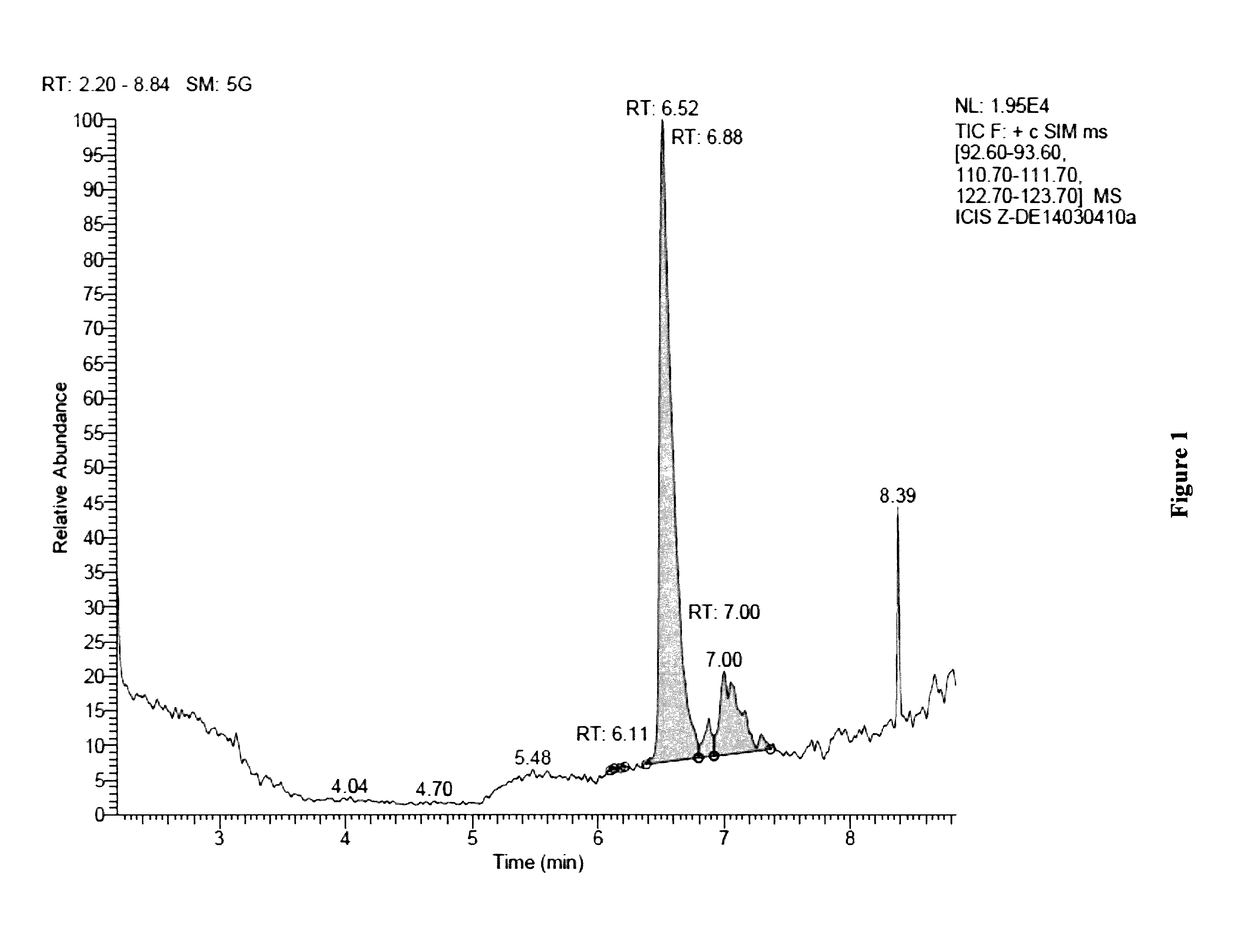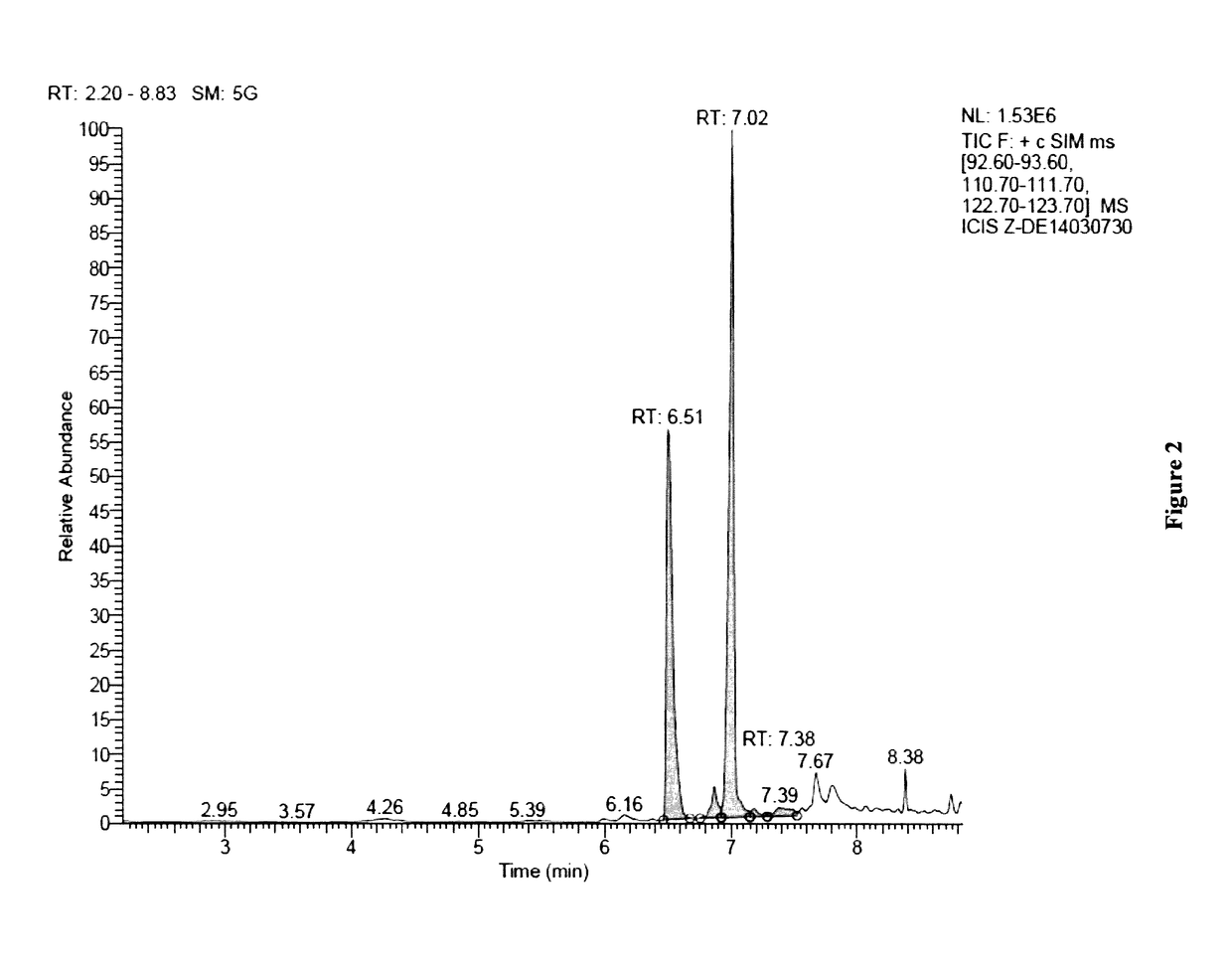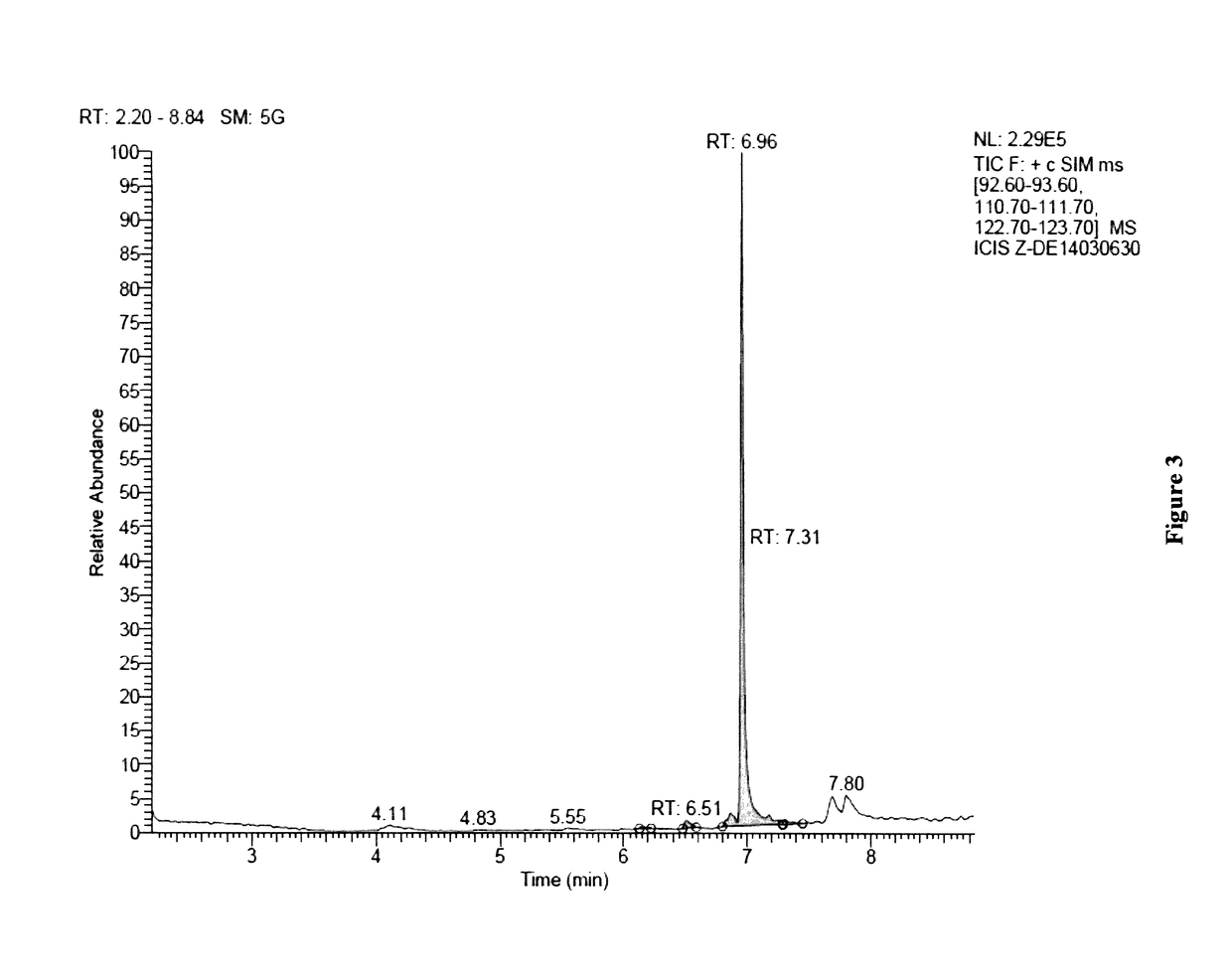Method of producing terpenes or terpenoids
a technology of terpenoids and terpenoids, which is applied in the field of microorganisms, can solve the problems of low yield and high production cost, genetic manipulation of the complex mep pathway can influence cellular growth rate and isoprene production, and achieve the effect of suppressing or reducing the activity of lycopene beta-cyclas
- Summary
- Abstract
- Description
- Claims
- Application Information
AI Technical Summary
Benefits of technology
Problems solved by technology
Method used
Image
Examples
example 1
Production of Geraniol and Geranic Acid
[0238]A Deinococcus geothermalis strain was genetically engineered to produce geraniol and geranic acid. A heterologous gene encoding a geraniol synthase (GES) from Ocimum basilicum was inserted into chromosome replacing phosphotransacetylase (pta) gene. Expression of GES gene was under the control of a strong constitutive promoter.
[0239]To make seed cultures, individual colonies were picked to inoculate 25 ml of CMG2% medium (Peptone 2 g / L; Yeast Extract 5 g / L; Glucose 55 mM (20 g / L); MOPS acid 40 mM; NH4Cl 20 mM; NaOH 10 mM; KOH 10 mM; CaCl2.2H2O 0.5 μM; Na2SO4.10H2O 0.276 mM; MgCl2.6H2O 0.528 mM; (NH4)6(Mo7)O24.4H2O 3 nM; H3BO3 0.4 μM; CoCl2.6H2O 30 nM; CuSO4.5H2O 10 nM; MnCl2 0.25 μM; ZnSO4.7H2O 10 nM; D-Biotin 1 μg / L; Niacin (nicotinic acid) 1 μg / L; B6 vitamin 1 μg / L; B1 vitamin; FeCl3 20 μM; Sodium Citrate.2H2O 20 μM; K2HPO4 5.7 mM) containing 2% glucose as the main carbon source, and cultured at 37° C. and 250 rpm overnight. Seed from lo...
example 2
Production of Lycopene
[0244]A Deinococcus geothermalis strain was genetically engineered to produce lycopene. The wild-type bacterium comprises related genes for synthesizing the lycopene through a MEP pathway. The recombinant D. geothermalis producing lycopene was obtained by disrupting a part of the carotenoid pathway, i.e. the lycopene beta-cyclase (EC 5.5.1.19) (crtlm) gene was knockout. The resulting constructs were checked by sequencing.
[0245]To make seed cultures, individual colonies were picked to inoculate 25 ml of CMG2% medium (Peptone 2 g / L; Yeast Extract 5 g / L; Glucose 55 mM (20 g / L); MOPS acid 40 mM; NH4Cl 20 mM; NaOH 10 mM; KOH 10 mM; CaCl2.2H2O 0.5 μM; Na2SO4.10H2O 0.276 mM; MgCl2.6H2O 0.528 mM; (NH4)6(Mo7)O24.4H2O 3 nM; H3BO3 0.4 μM; CoCl2.6H2O 30 nM; CuSO4.5H2O 10 nM; MnCl2 0.25 μM; ZnSO4.7H2O 10 nM; D-Biotin 1 μg / L; Niacin (nicotinic acid) 1 μg / L; B6 vitamin 1 μg / L; B1 vitamin; FeCl3 20 μM; Sodium Citrate.2H2O 20 μM; K2HPO4 5.7 mM) containing 2% glucose as the main...
example 3
Overexpression of the FPP Synthase
[0248]The farnesyl pyrophosphate synthase (FPPS) gene from Deinococcus geothermalis (SEQ ID NO: 46) was inserted in the genome of the recombinant D. geothermalis expressing the GES of Ocimum basilicum of example 1 and the recombinant D. geothermalis producing lycopene of example 2, under the control of a strong constitutive promoter. The resulting constructs were checked by sequencing.
[0249]To make seed cultures, individual colonies were picked to inoculate 25 ml of CMG2% medium (Peptone 2 g / L; Yeast Extract 5 g / L; Glucose 55 mM (20 g / L); MOPS acid 40 mM; NH4Cl 20 mM; NaOH 10 mM; KOH 10 mM; CaCl2.2H2O 0.5 μM; Na2SO4.10H2O 0.276 mM; MgCl2.6H2O 0.528 mM; (NH4)6(Mo7)O24.4H2O 3 nM; H3BO3 0.4 μM; CoCl2.6H2O 30 nM; CuSO4.5H2O 10 nM; MnCl2 0.25 μM; ZnSO4.7H2O 10 nM; D-Biotin 1 μg / L; Niacin (nicotinic acid) 1 μg / L; B6 vitamin 1 μg / L; B1 vitamin; FeCl3 20 μM; Sodium Citrate.2H2O 20 μM; K2HPO4 5.7 mM) containing 2% glucose as the main carbon source, and cultu...
PUM
 Login to View More
Login to View More Abstract
Description
Claims
Application Information
 Login to View More
Login to View More - R&D
- Intellectual Property
- Life Sciences
- Materials
- Tech Scout
- Unparalleled Data Quality
- Higher Quality Content
- 60% Fewer Hallucinations
Browse by: Latest US Patents, China's latest patents, Technical Efficacy Thesaurus, Application Domain, Technology Topic, Popular Technical Reports.
© 2025 PatSnap. All rights reserved.Legal|Privacy policy|Modern Slavery Act Transparency Statement|Sitemap|About US| Contact US: help@patsnap.com



